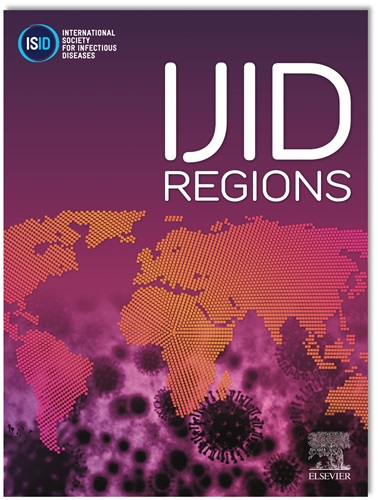Occurrence of macrolides resistance in Legionella pneumophila ST188: Results of the Belgian epidemiology and resistome investigation of clinical isolates
IF 4.8
2区 医学
Q1 INFECTIOUS DISEASES
引用次数: 0
Abstract
Objectives
The incidence of Legionnaires’ disease steadily increases worldwide. Although Legionella pneumophila is known as pathogenic, systematic investigations into antibiotic resistance are scarce, and reports of resistance in isolates are recently emerging.
Methods
Clinical cases and metadata reported to the Belgian National Reference Centre between 2011 and 2022 were retrospectively analyzed. A total of 283 clinical isolates were typed by core genome multi-locus sequence typing (cgMLST). Acquired genes or mutations triggering resistance were extracted from all of them.
Results
The number of Legionnaires’ disease cases has increased in Belgium. Urinary antigen testing remains the main used test, but polymerase chain reaction and serology allow the diagnostic in 14.8% and 2.4% of cases, respectively. cgMLST showed a good discrimination between sequence typing (ST) and minimal variation for ST47 isolates, whereas ST1s were more diverse. Genotypic screening identified a 23S ribosomal RNA mutation linked to a high-level macrolide resistance in one isolate of ST188, which is genetically closed to resistant isolates from France.
Conclusion
The increase in incidence is of concern and likely an under-estimate due to the reliance on urine antigen testing. Routine typing by cgMLST allows good discrimination and the first clinical isolate reported as resistant for macrolides was cultured, underscoring the need to define resistance breakpoints and incorporate antimicrobial susceptibility testing as routine clinical investigation practice.
求助全文
约1分钟内获得全文
求助全文
来源期刊
CiteScore
18.90
自引率
2.40%
发文量
1020
审稿时长
30 days
期刊介绍:
International Journal of Infectious Diseases (IJID)
Publisher: International Society for Infectious Diseases
Publication Frequency: Monthly
Type: Peer-reviewed, Open Access
Scope:
Publishes original clinical and laboratory-based research.
Reports clinical trials, reviews, and some case reports.
Focuses on epidemiology, clinical diagnosis, treatment, and control of infectious diseases.
Emphasizes diseases common in under-resourced countries.

 求助内容:
求助内容: 应助结果提醒方式:
应助结果提醒方式:


